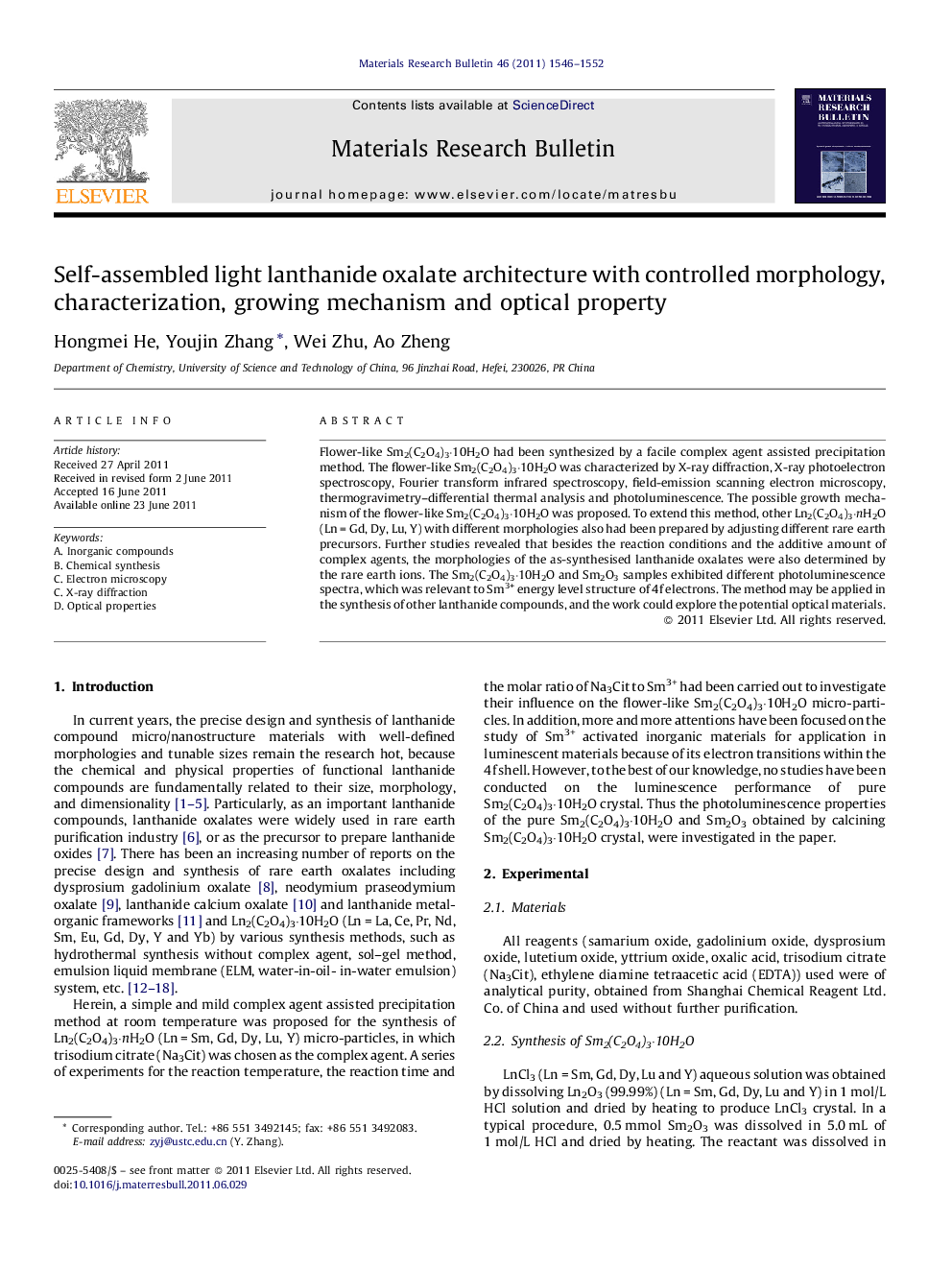| Article ID | Journal | Published Year | Pages | File Type |
|---|---|---|---|---|
| 1489911 | Materials Research Bulletin | 2011 | 7 Pages |
Flower-like Sm2(C2O4)3·10H2O had been synthesized by a facile complex agent assisted precipitation method. The flower-like Sm2(C2O4)3·10H2O was characterized by X-ray diffraction, X-ray photoelectron spectroscopy, Fourier transform infrared spectroscopy, field-emission scanning electron microscopy, thermogravimetry–differential thermal analysis and photoluminescence. The possible growth mechanism of the flower-like Sm2(C2O4)3·10H2O was proposed. To extend this method, other Ln2(C2O4)3·nH2O (Ln = Gd, Dy, Lu, Y) with different morphologies also had been prepared by adjusting different rare earth precursors. Further studies revealed that besides the reaction conditions and the additive amount of complex agents, the morphologies of the as-synthesised lanthanide oxalates were also determined by the rare earth ions. The Sm2(C2O4)3·10H2O and Sm2O3 samples exhibited different photoluminescence spectra, which was relevant to Sm3+ energy level structure of 4f electrons. The method may be applied in the synthesis of other lanthanide compounds, and the work could explore the potential optical materials.
Graphical abstractFigure optionsDownload full-size imageDownload as PowerPoint slideHighlights► Flower-like Sm2(C2O4)3·10H2O was gained with Na3Cit assisted precipitation method. ► The mechanism of the flower-like Sm2(C2O4)3·10H2O formation was proposed. ► The Sm2(C2O4)3·10H2O and Sm2O3 samples exhibited obviously different PL spectra. ► Ln2(C2O4)3·nH2O (Ln = Gd, Dy, Lu, Y) also were achieved by the simple method.
